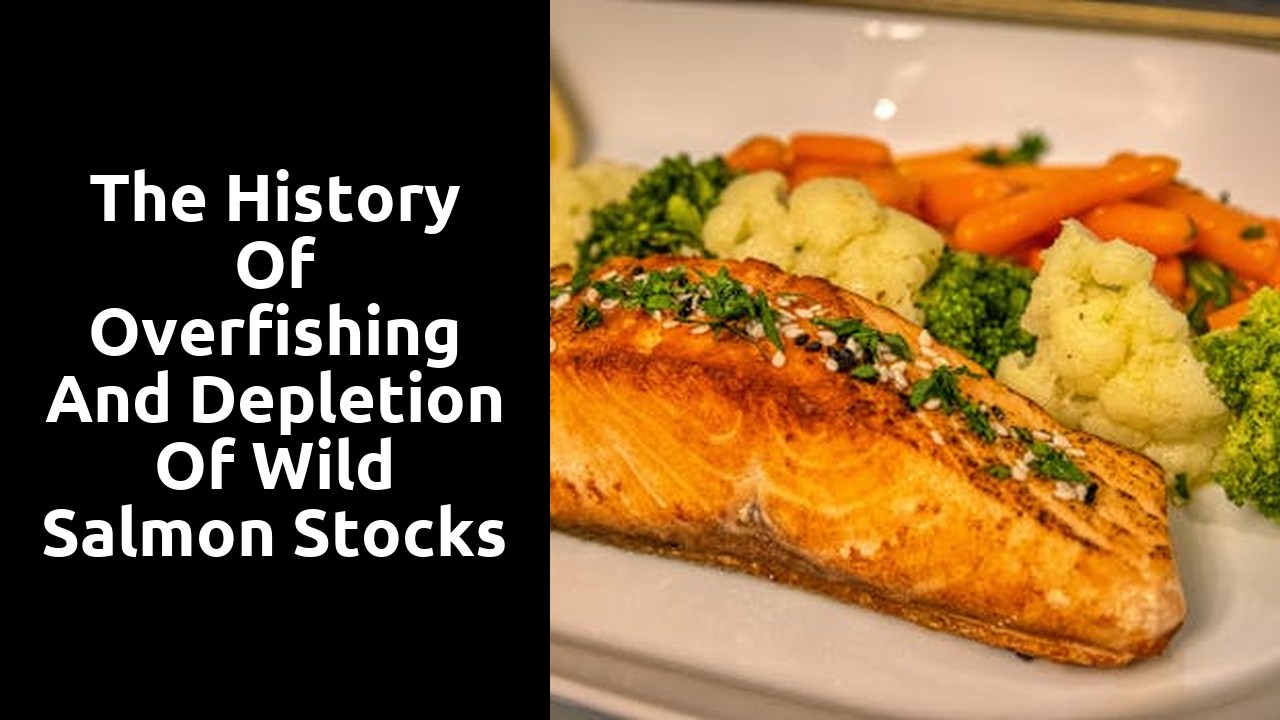The History of Overfishing and Depletion of Wild Salmon Stocks

Global Effects of Overfishing
Overfishing has had profound consequences on the marine environment, particularly evident in the case of wild salmon stocks. The rapid decline in salmon populations due to excessive fishing has disrupted the delicate balance of marine ecosystems, triggering a chain reaction of detrimental effects across the globe.
As wild salmon populations diminish, predators relying on this vital food source face increased competition, leading to decreased biodiversity and potential species extinctions. Moreover, the imbalance caused by overfishing disrupts the natural food web, impacting other marine organisms and ultimately jeopardising the health of entire ecosystems. The global effects of overfishing extend beyond mere depletion of fish stocks, posing a significant threat to the sustainability and resilience of our oceans.
Disruption of Marine Ecosystems
The depletion of wild salmon stocks due to overfishing has had a profound impact on marine ecosystems globally. As keystone species, salmon play a vital role in maintaining the balance of aquatic environments. Their disappearance disrupts the food chain, affecting predators higher up and prey lower down the chain. This disruption has cascading effects, leading to the decline of other species that depend on salmon for food or habitat.
The loss of wild salmon populations also weakens the genetic diversity of marine ecosystems. Overfishing can reduce the gene pool, making populations more vulnerable to diseases and environmental changes. This loss of genetic diversity diminishes the resilience of marine species to adapt to new challenges, threatening the overall health and stability of ecosystems. The ripple effects of overfishing extend far beyond just the decline of a single species, making it imperative to address this issue through sustainable fishing practices and conservation efforts.
Sustainable Fishing Solutions
One effective solution to combat the overfishing and depletion of wild salmon stocks is the implementation of fishing quotas and restrictions. By enforcing strict regulations on the amount of salmon that can be caught each year, authorities can help ensure the long-term sustainability of these crucial marine species. These quotas can be based on scientific research that takes into account the current population numbers and reproductive rates of wild salmon, thus helping to prevent overexploitation.
In addition to fishing quotas, another key sustainable fishing solution is the promotion of responsible fishing practices. This involves encouraging fishermen to use selective fishing methods that minimise bycatch and harm to non-target species. By adopting practices such as using gear that reduces accidental catches of juvenile salmon or other marine animals, fishermen can help protect the delicate balance of marine ecosystems and safeguard the future of wild salmon populations.
Implementation of Fishing Quotas and Restrictions
Fishing quotas and restrictions have been established by governing bodies to regulate the amount of fish caught in order to prevent overfishing and ensure sustainable fish populations. These measures aim to maintain the balance of marine ecosystems and preserve the delicate biodiversity of the oceans. By setting limits on the quantity of fish that can be harvested, authorities can prevent the depletion of wild salmon stocks and safeguard the future of this important species.
Furthermore, fishing restrictions help to protect various fish populations during critical periods of their life cycles, such as breeding seasons. By implementing closed seasons or areas where fishing is prohibited, authorities can allow fish populations to replenish and grow without disturbance. This strategic approach to fisheries management is vital in combating the consequences of overfishing and promoting responsible harvesting practices that will benefit both the environment and the fishing industry in the long term.
Collaborative Conservation Efforts
Collaborative conservation efforts play a vital role in the protection and preservation of wild salmon stocks. By bringing together governments, environmental organisations, scientists, and local communities, these initiatives aim to address the challenges posed by overfishing and habitat destruction. Through shared knowledge, resources, and expertise, collaborative conservation efforts can work towards sustainable solutions for the long-term health of salmon populations.
One key aspect of collaborative conservation is the active involvement of environmental non-governmental organisations (NGOs). These groups often lead the way in advocating for stronger regulations, monitoring the health of salmon populations, and raising awareness about the importance of preserving these iconic fish species. By working alongside policymakers and stakeholders, environmental NGOs can help drive positive change and ensure that wild salmon continue to thrive in their natural habitats.
Role of Environmental NGOs
Environmental NGOs play a crucial role in advocating for the protection of wild salmon stocks and sustainable fishing practices. These organisations work tirelessly to raise awareness about the dangers of overfishing and the depletion of marine resources. Through research, education, and activism, environmental NGOs strive to influence policymakers and industry stakeholders to implement effective conservation measures.
By working closely with government agencies, conservation groups, and local communities, environmental NGOs facilitate collaborative efforts to restore salmon populations and preserve their natural habitats. These organisations often engage in public outreach campaigns, organise clean-up initiatives, and support scientific research projects to further their conservation goals. Through their unwavering dedication and passion for environmental stewardship, these NGOs play a vital role in safeguarding the future of wild salmon stocks for generations to come.
Related Links
Review: The Environmental Impact of Aquaculture PracticesHow to Choose Sustainable Salmon Fillets
What Makes Wild Salmon Sustainable
Why Consumer Awareness is Key to Sustainable Seafood Choices
Top 10 Sustainable Seafood Choices for Consumers
What to Look for in Sustainable Seafood Certifications
Why Overfishing is a Threat to Wild Salmon Stocks